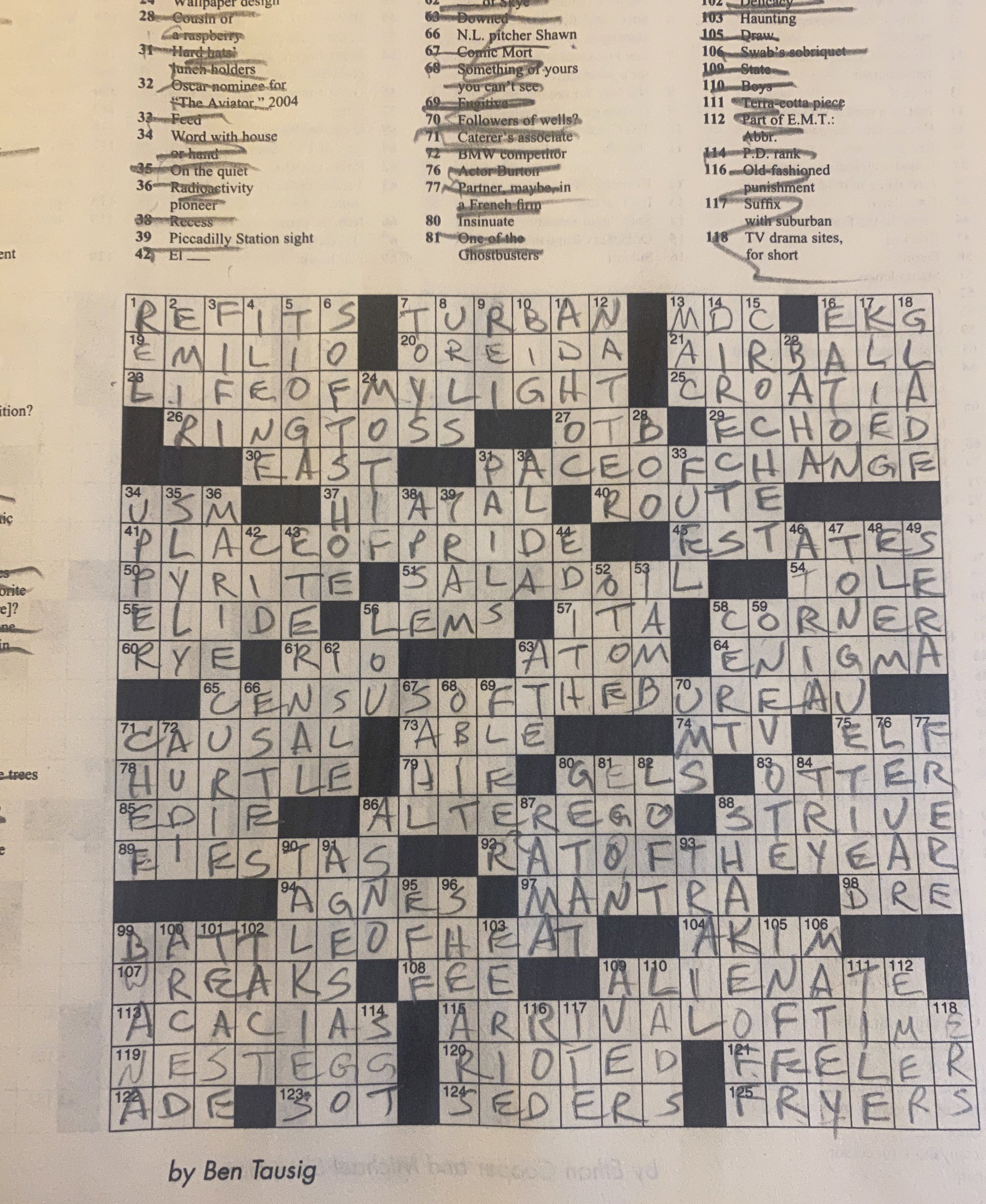The Crossword: A Metaphor
/I have for you a pretty good metaphor and model for the entire ABORTIVE ATTEMPTS > GESTALT > SUCCESSIVE APPROXIMATION cycle: the crossword puzzle.
In the evenings, as we watch television, I solve crossword puzzles, and not just any crossword puzzles. I have a big thick book of New York Times Sunday puzzles, which are big and fun and not easy to solve. I have two different approaches, depending on my mood. The first is to go through all the ACROSS clues, filling in what I know (or dare to guess), then the DOWN clues, then back and forth until it’s solved. The second is to start with the first ACROSS clue then solve for that clue’s DOWN clues, filling each quadrant as best I can.
SIDEBAR: Weird things happen to me when I’m solving the NYT puzzle, which you can read about over at my other blog.
The other night I was employing my first strategy, all the ACROSS clues first, and when I finished that first pass I realized something.
Look at that. Out of 50-something ACROSS clues, I got fifteen, with two additional guesses lightly penciled in. That’s pitiful. How can this possibly be a successful session?
That’s the point, isn’t it? This is nothing more than an ABORTIVE ATTEMPT. So will the DOWN clue pass be an ABORTIVE ATTEMPT. Then we begin the GESTALT of going back through and looking at the empty spaces and figuring out what will fit there. Do the new words confirm my guesses? If not, which is right?
Back and forth we go, filling in the blanks with new information as it comes to us, until we’re done. It’s time to ABANDON the puzzle and turn the page to the next one.
As a model for the creative process, for MAKING THE THING THAT IS NOT, our crossword puzzle metaphor is not without its flaws. For one thing, there is a solution to the puzzle, one correct, predetermined way to finish it, and of course with our art there is no such guarantee.
But even with that terrifying prospect of complete freedom in our work, we can have that sense of pinning down what we know to be true about our work — we can “pencil in” parts that we’re not sure about, with options to change later — we can loop back and forth between what we’re sure about and what is still “blank.”
In other words: Take a stab at it. See what’s missing. Nudge it a bit. Repeat. Finish it.
Turn turn kick turn — yes, it will WORK!





